










| Great Cormorant (Phalacrocorax carbo (Linnaeus, 1758)) |











|
|
Scientific name: Phalacrocorax carbo (Linnaeus, 1758) Common name: Great Cormorant French name: Grand Cormoran Order: Suliformes Family: Phalacrocoracidae Size: Body size : 90 cm, Wingspan : 150 cm, Weight : from 2 to 2,5 kg. Habitat: The North-Atlantic subspecies breeds on rocky coasts. The Southern-Europe Central-Asia subspecies breeds in inland areas near still or running water with a preference for large humid basins. Food: The Great Cormorant is piscivorous. It catches fishes, up to 750g per day, diving under water. Nesting: The North-Atlantic subspecies nests on the ground, in colonies. The Southern-Europe Central-Asia subspecies nests in trees. Females lay 3 to 4 eggs, between April and June, in a nest built with seaweeds or sticks. Both parents take care of the young birds. Migration: Northern birds move southwards in winter. Geographic area: There are several subspecies. Phalacrocorax carbo carbo lives near the North-Atlantic coasts (Europe, North America, North Africa). Phalacrocorax carbo sinensis lives in southern Europe and in central Asia. Phalacrocorax carbo lucidus lives in Equatorial Africa. Phalacrocorax carbo novaehollandiae lives in Australasia, and Phalacrocorax carbo hannedae lives in Japan. This list is not complete. The Great Cormorant is only missing in South America and in Antarctica. |
The Great Cormorant has an entirely black plumage with a metallic sheen. There is a white patch on the throat and white patch on each thigh. The first one shrinks in winter and the second one totally disappears. The Great Cormorant has a strong hook-tipped bill will a yellow mark near the base. Young birds have a paler plumage. Between two dives, it swims with most of the body under water and the bill pointed upwards. The Great Cormorant can dive down to a depth of 20 meters to fish. You can often see it perched during long hours, tail and wings held open to dry. |
| [To know more about the Great Cormorant] [Next picture] [Top] |
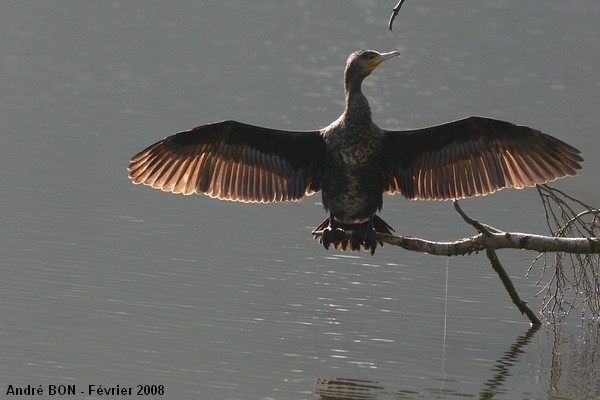
|
It was always very difficult to approach Great Cormorants perched with their wings wide open. This one stood in front of me during several minutes on this February day. This was magic! It stayed quietly perched on this branch and I have been able to walk very close. |
| [To know more about the Great Cormorant] [Next picture] [Previous picture] [Top] |
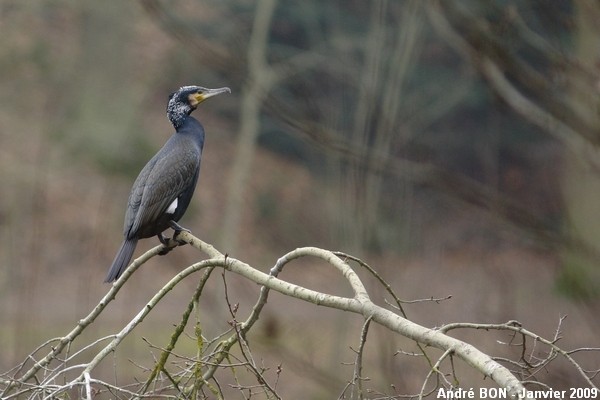
|
There is a basic rule in wildlife photography. You always need to take the picture at the same height of the subject's eye. This rule is difficult to apply with Great Cormorants perched higher than 10 meters. At least this one has allowed me to shoot the picture at the height of the eyes! |
| [To know more about the Great Cormorant] [Next picture] [Previous picture] [Top] |
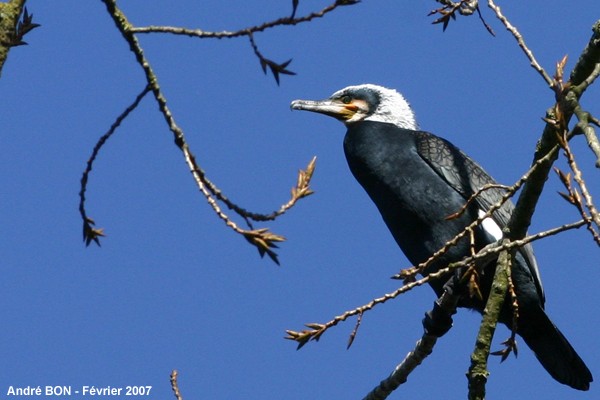
|
The white patches on the head and on the thigh are typical of Phalacrocorax carbo sinensis subspecies. I have read that the white patch on the thigh disappears in winter. This male has already its nuptial plumage in February! |
| [To know more about the Great Cormorant] [Next picture] [Previous picture] [Top] |

|
The Great Cormorants are used to perching on top of the high poplars bordering the pond. Then photos are always showing the underside view. Beware of droppings … The Great Cormorants we observe in the Paris area in winter must come from the Netherlands or from Denmark. |
| [To know more about the Great Cormorant] [Next picture] [Previous picture] [Top] |
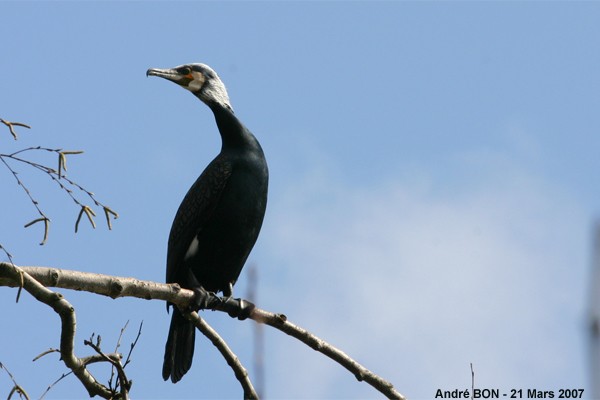
|
The Great Cormorants are used to perching on top of the high trees bordering the pond. Isn't their high consumption of fishes done to the detriment of other species like Grebes? |
| [To know more about the Great Cormorant] [Next picture] [Previous picture] [Top] |
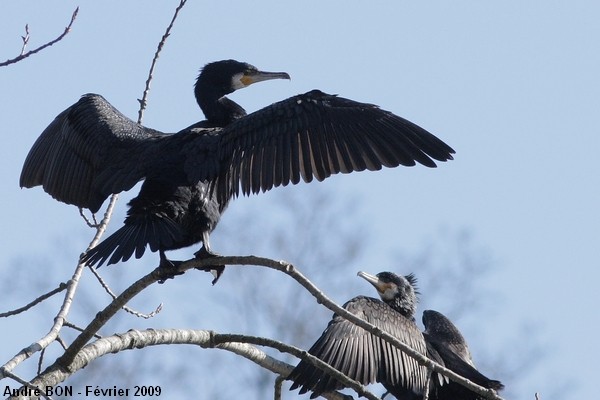
|
Many birds are used to perching on the best located trees. The Great Cormorants even do not fly away when we approach this tree near the footpath. |
| [To know more about the Great Cormorant] [Next picture] [Previous picture] [Top] |
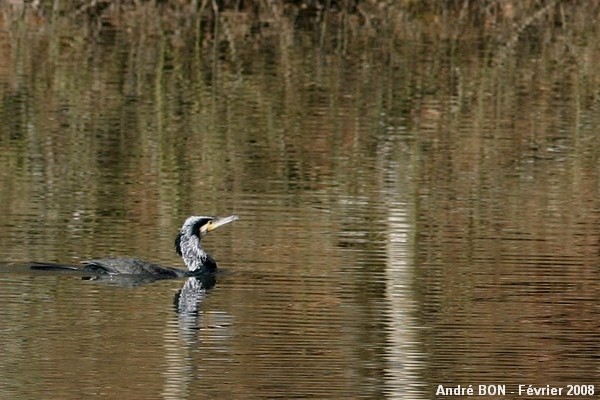
|
Great Cormorants are used to swimming with the bill pointed upwards. |
| [To know more about the Great Cormorant] [Next picture] [Previous picture] [Top] |
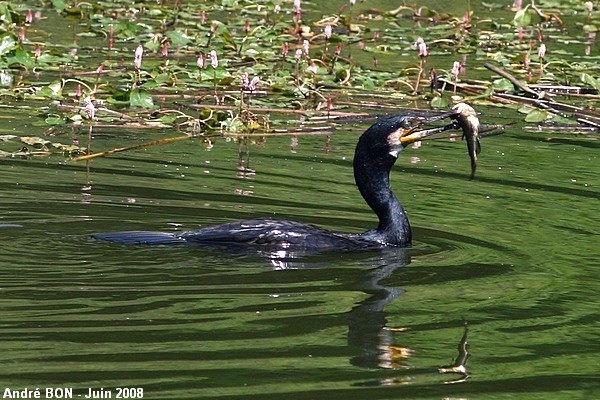
|
Great Cormorants use their hook-tipped bill to catch fishes. In June, all the Great Cormorants have left and moved northwards. Very few of them stay on these ponds of the Paris area during summer. |
| [To know more about the Great Cormorant] [Next picture] [Previous picture] [Top] |
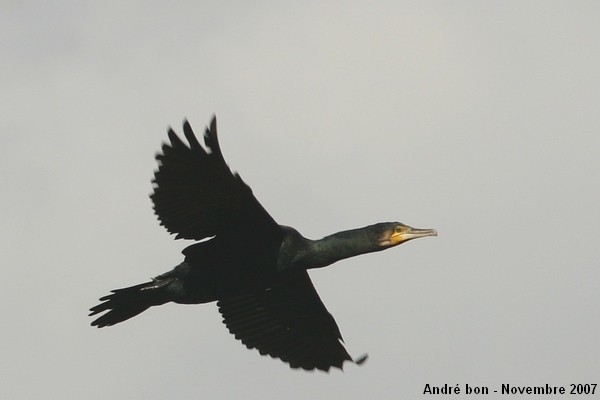
|
I still have to make progress on taking pictures of birds in flight. Almost all my pictures go directly to the trash, except on rare exceptions. I just try to find an excuse with the low autofocus speed of my old digital SLR. |
| [To know more about the Great Cormorant] [Next picture] [Previous picture] [Top] |
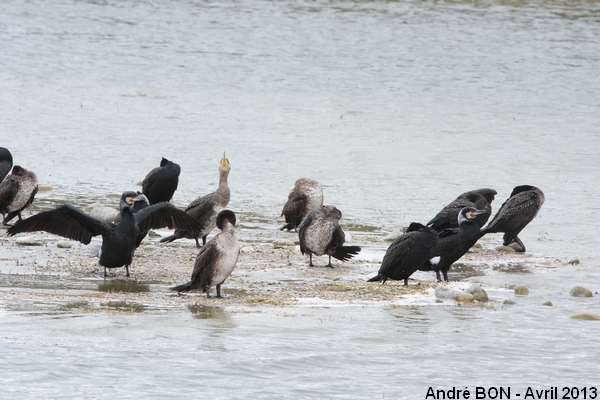
|
I have observed this small group of Great Cormorants in the Park of Marquenterre in the Somme bay. Do they belong to the Atlantic or continental subspecies? I have read that the size and shape of the white markings differ depending on subspecies, however I have not enough experience to use this criteria. |
| [To know more about the Great Cormorant] [Previous picture] [Top] |
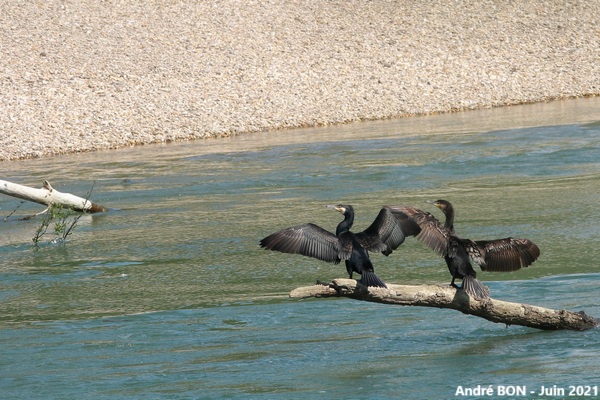
|
Great Cormorants also come to spend their holidays in the "Basse Vallée du Doubs". |